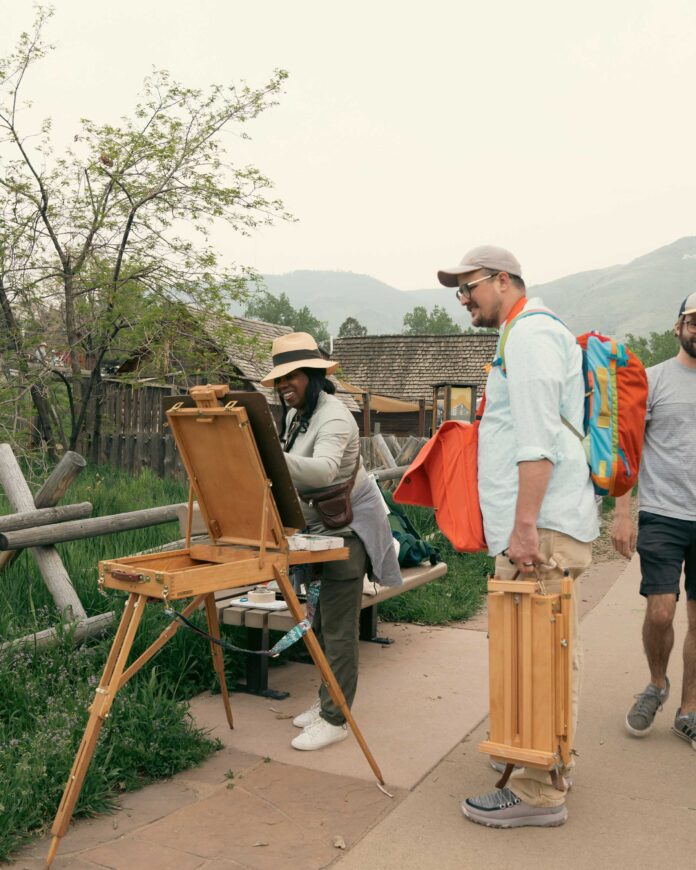At the first paint-out of PACE ’23, some artists painted on location for the very first time after a full day of demos and friend-making.
Alongside the rippling Clear Creek in Golden, Colorado last night, a group of tour buses paused to unload determined plein air painters – some of who were painting on location for the first time in their lives. They weren’t alone, though, because faculty and field painters from the 10th Annual Plein Air Convention & Expo (PACE) were there to guide them.
“You’ve got to do it,” a friend told Trina Campbell, who was experiencing plein air painting for the first time with us. Trina shared with me that she’s starting a new chapter in her life, and painting is a big part of it. She invested in not only her PACE ticket and trip but also the gear that will support her art journey. “I’m super glad I made the decision to do this,” she said, adding that from the time she arrived at PACE, others were offering helpful advice and support. “I feel it was the best decision to make, for sure.”
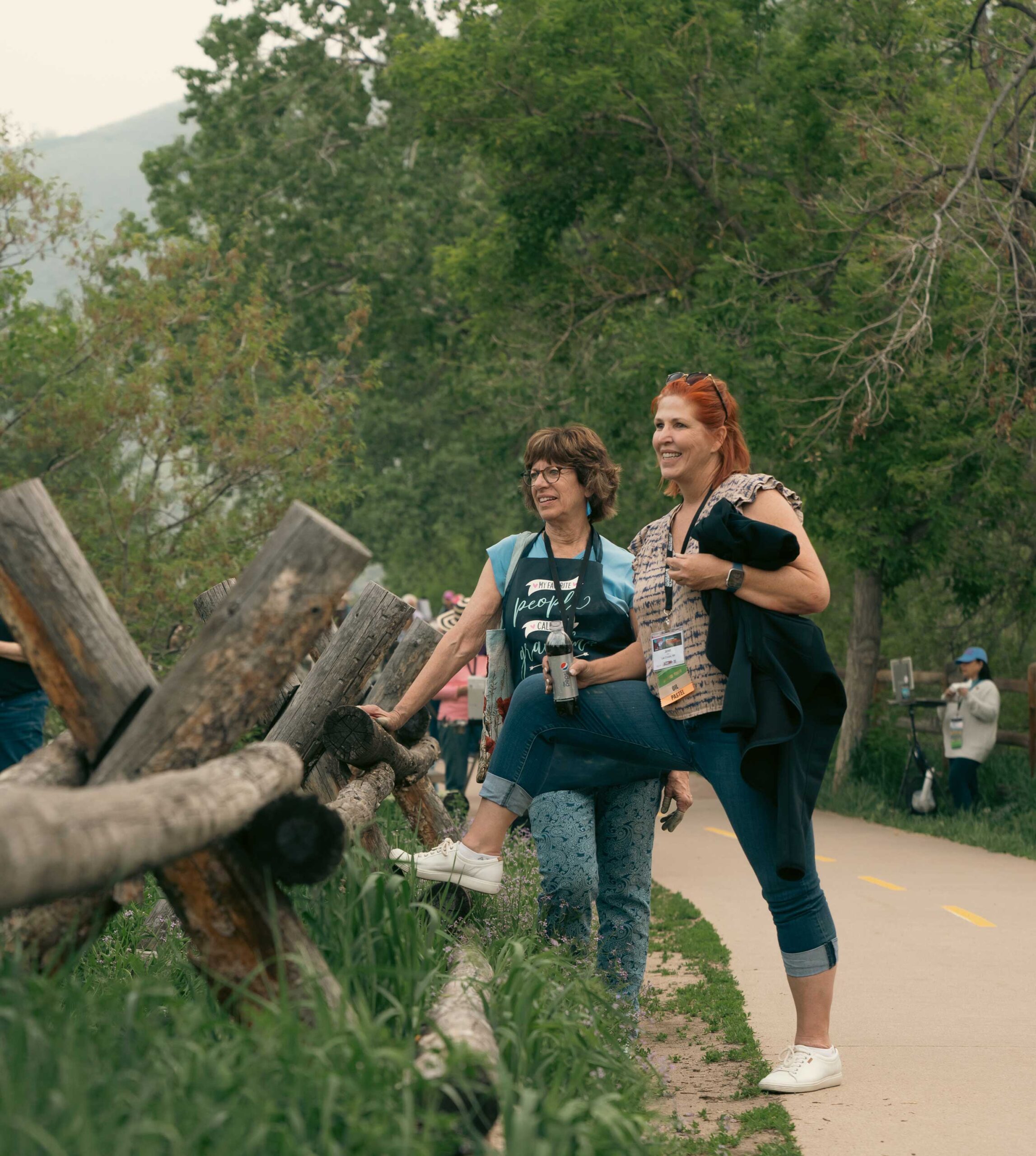
This was for our first paint-out of the week, where many chose to focus on Clear Creek and its busy walking path, quaint bridges, and calming waves. Others went a few blocks deeper and painted downtown Golden, which is lined with shops and restaurants, all tucked next to the mountains.
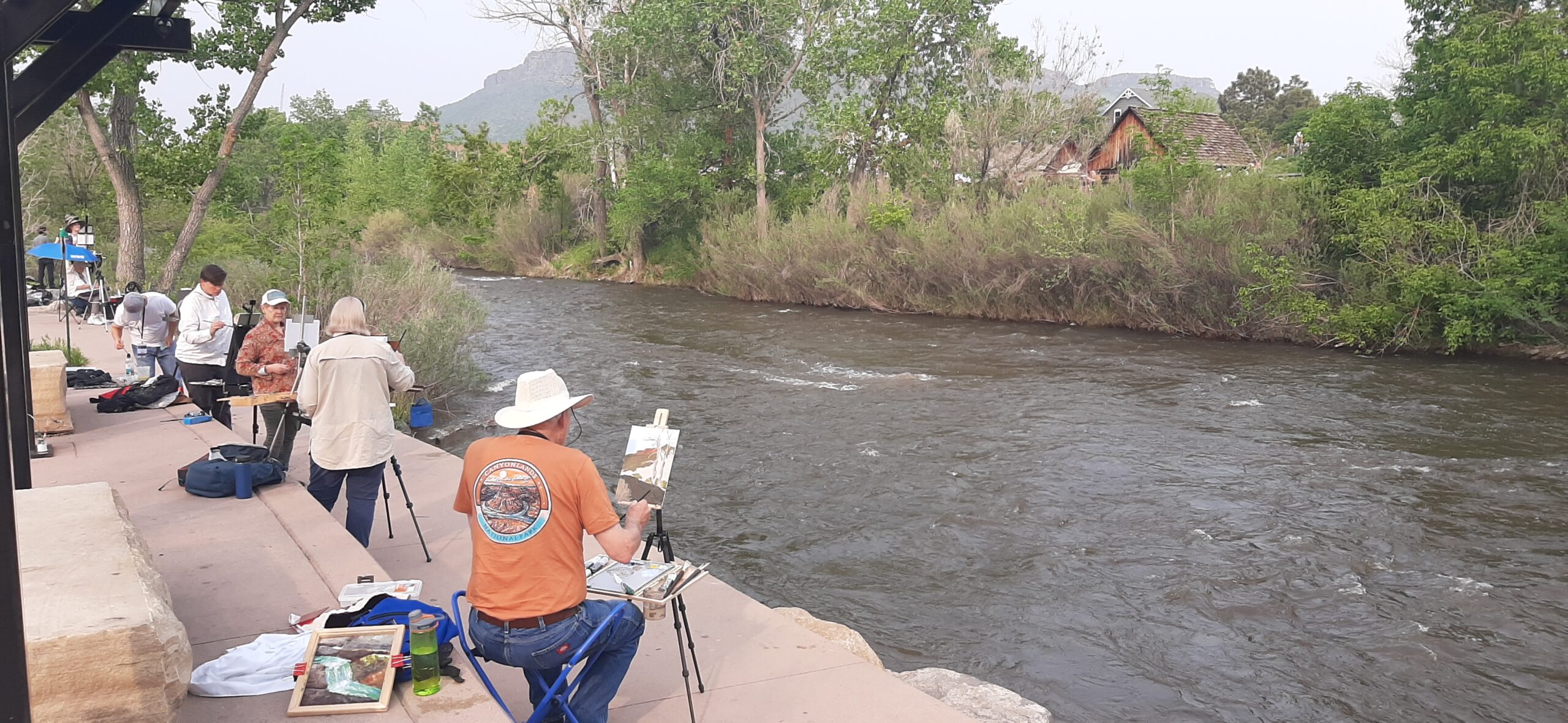
But before we ventured out into Golden, we had a full day of incredible demonstrations. Here are some of the highlights from the stages on Monday:
A student of Henry Hensche, Camille Przewodek explained that one of her main focuses is on the use of color and light keys. She likes to transfer this to her students today, encouraging them to also develop their own style and to know that it can take years. She poses the question, “What separates you from every other plein air artist?” After the session, Camille finished her painting at the LPAPA booth in the Expo Hall.
“This session was wonderful,” said Wendy Zachary of Tucson, Arizona. “We learned a lot about colors and their behavior during changes in weather and time.”
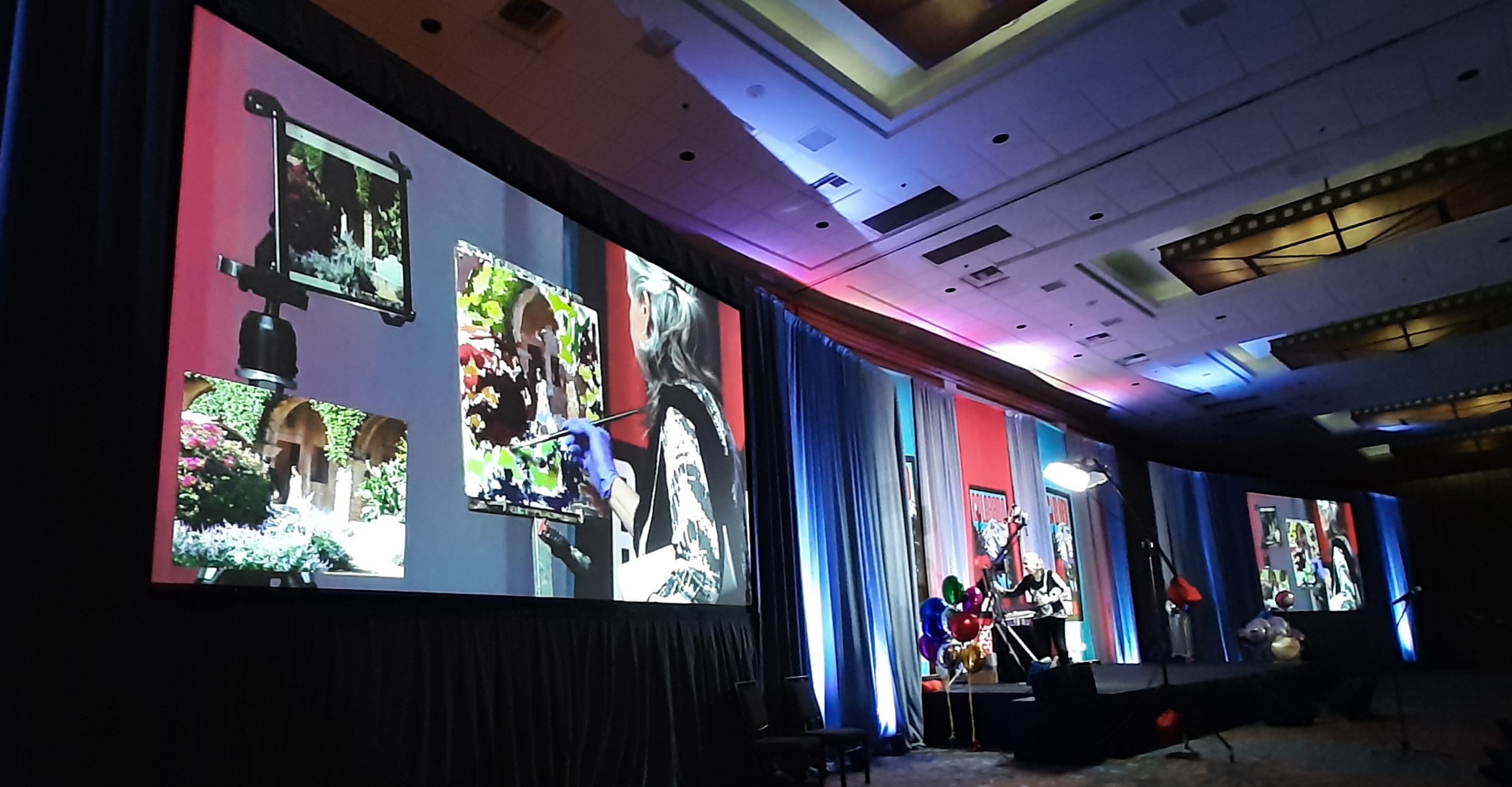
In “The Artist as Conservationist,” Jean Stern discussed how plein air painters such as Albert Bierstadt (1830-1902) worked side by side with early photographers on expeditions to show the beauty of America and what is today our national parks. As the photographers documented the scenes in black and white, the painters would give life to the images with a world of color and depth.
“One of my favorite things to think about is how to compose and design a painting,” said Jim Wodark in his painting demo. When an attendee asked why he chose a square canvas, Jim took the opportunity to explain that the canvas was a 12 x 16, but one can use compositional tools to give the illusion that the canvas is a different size or shape.
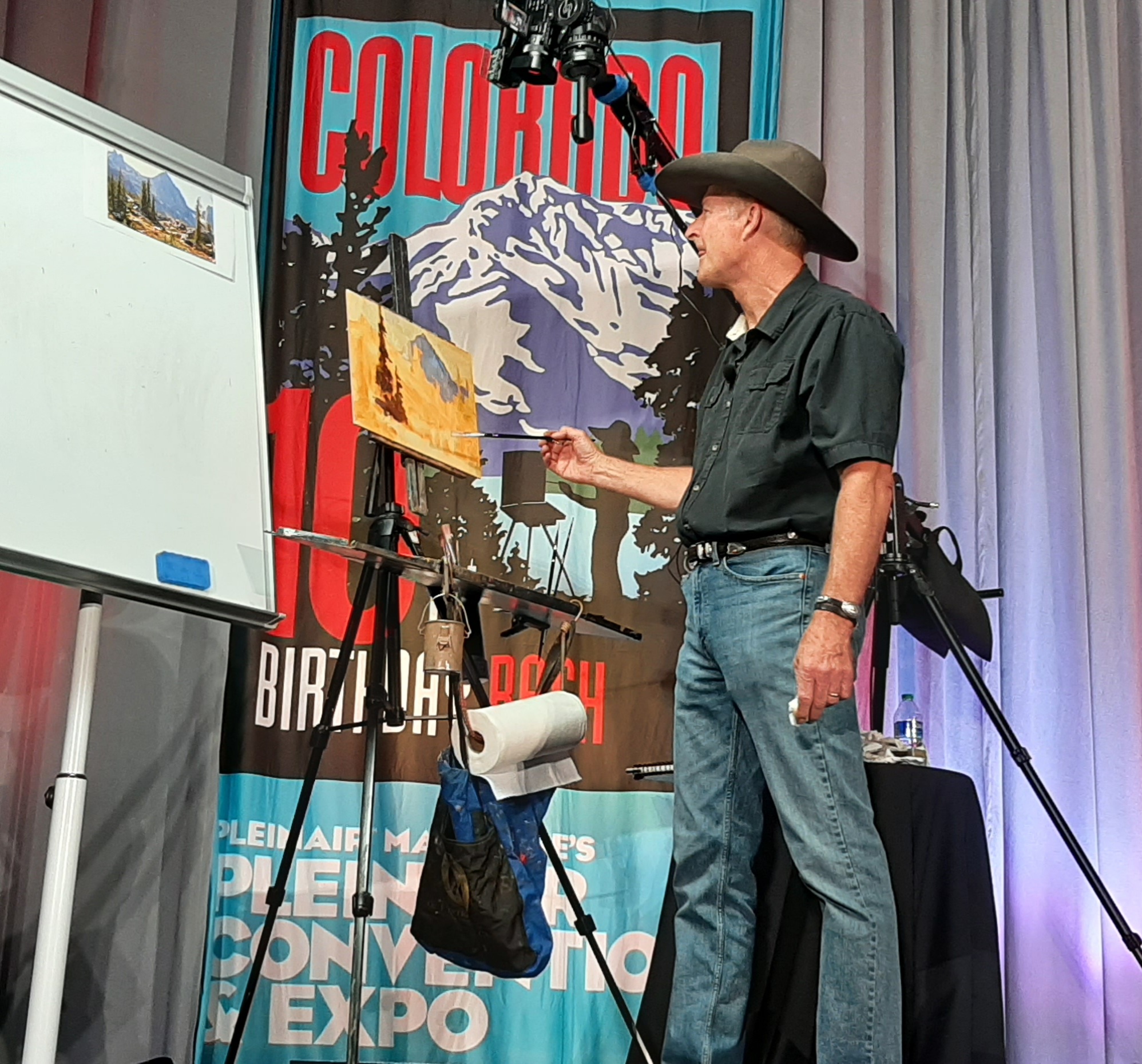
Eric Rhoads did a live recording of the Art Marketing Minute Podcast during the lunch hour, and this was followed by a much-anticipated session led by watercolor painter Alvaro Castagnet.
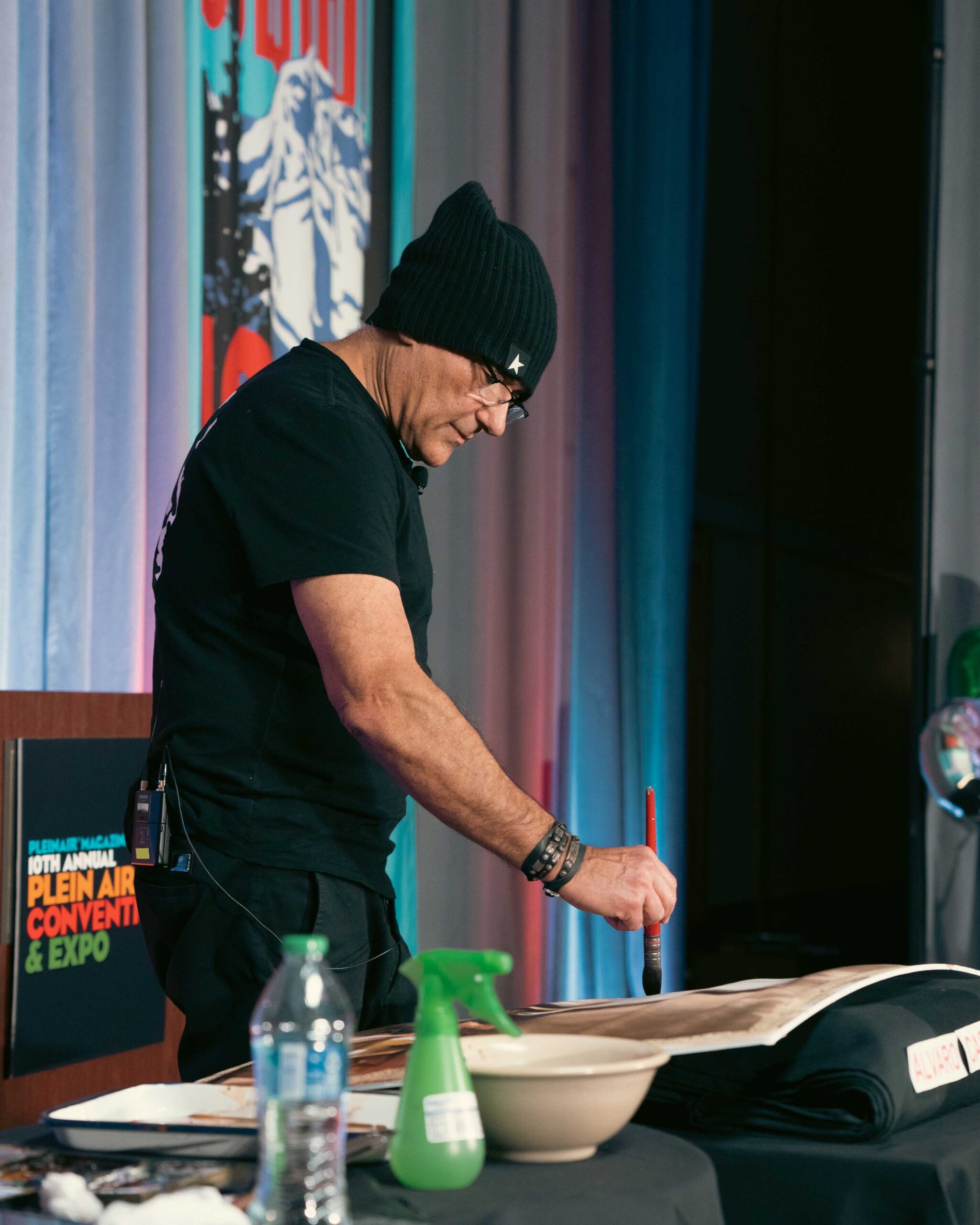
While all of this above was taking place on the main stage, we had several other stages featuring even more artists, media, and styles.
For example, on the Pastel stage, Doug Dawson explained how he uses cornmeal to clean his pastels even when painting en plein air. He then bravely invited some of us up to the stage to choose a random stick of pastel to use during his painting demonstration, encouraging them to choose a color they didn’t think would work for his reference photo. “One of the most exciting things about pastel isn’t applying a favorite color,” Doug said, “but finding exciting color solutions as you paint.”
“I love the way Doug used his rich colors and his ability to do clear steps with which to show his process,” said fellow painter Susan Nicholas Gephart.
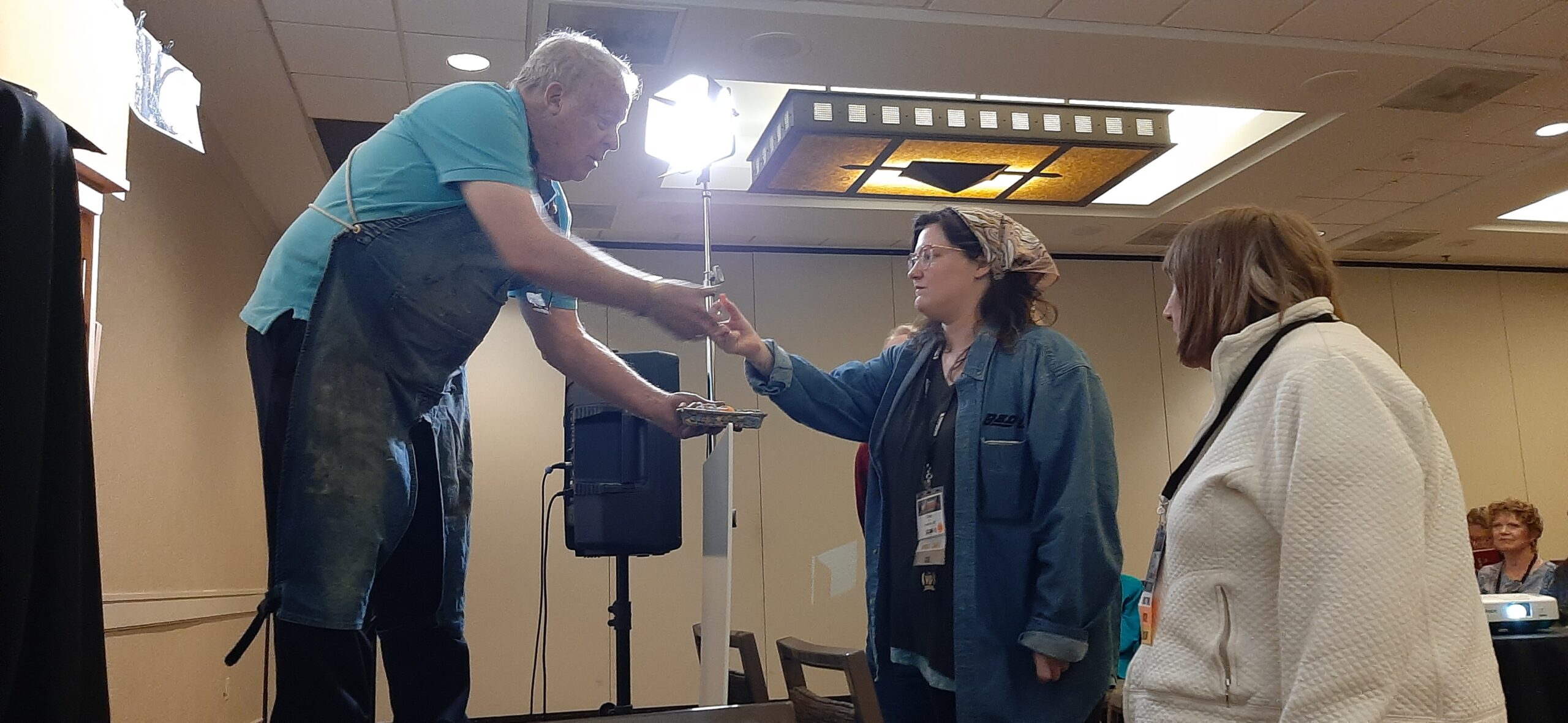
More Favorite Moments
In watercolor, gradation is a handy principle to have in your toolbox to create the illusion of light, depth, and atmosphere in a landscape. In Dan Mondloch’s demo we learned to identify common gradations that exist in many scenes, and discovered helpful techniques for how to paint them in watercolor.
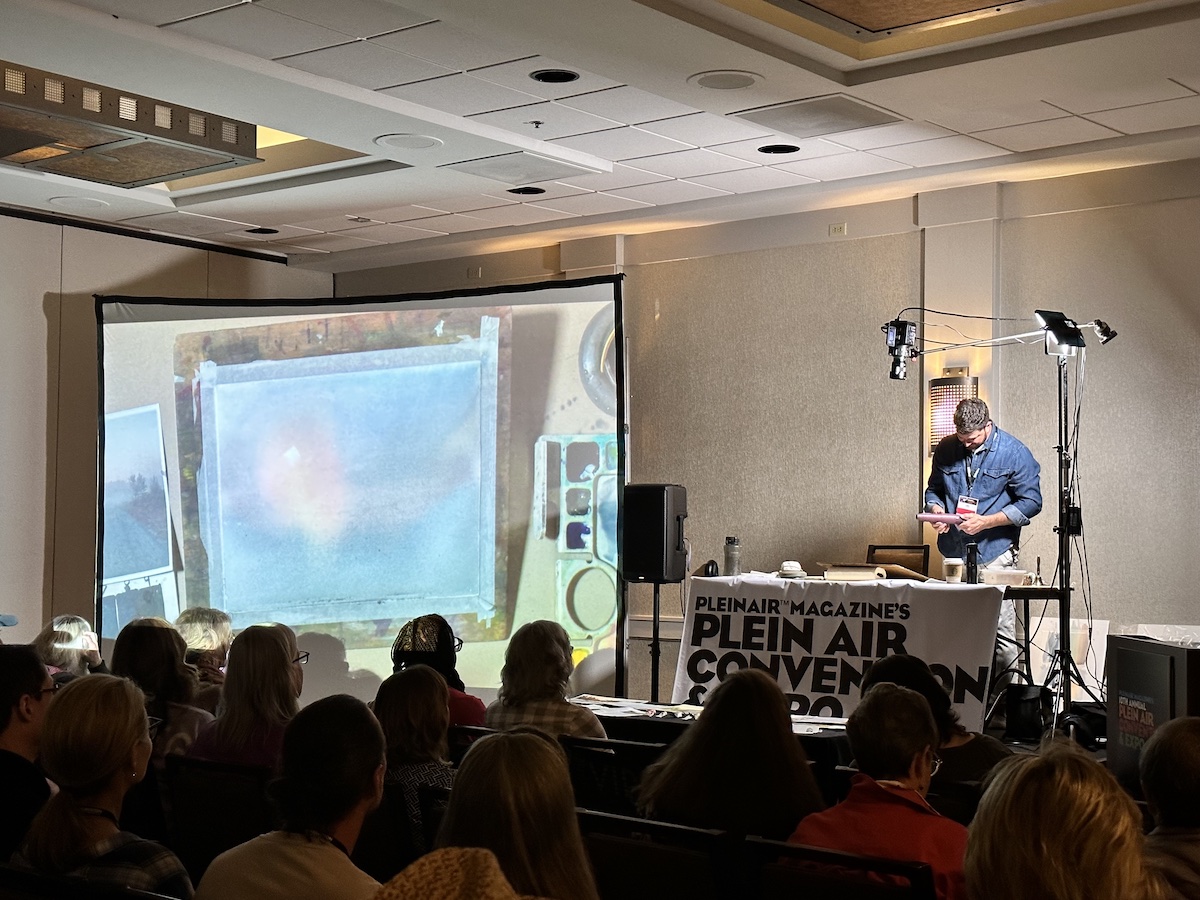
We learned how to interpret simple “rules” to foster creativity with Christine Lashley’s demonstration. “Going into simple shapes first with a very clear value structure is the first best step you can do,” she said.
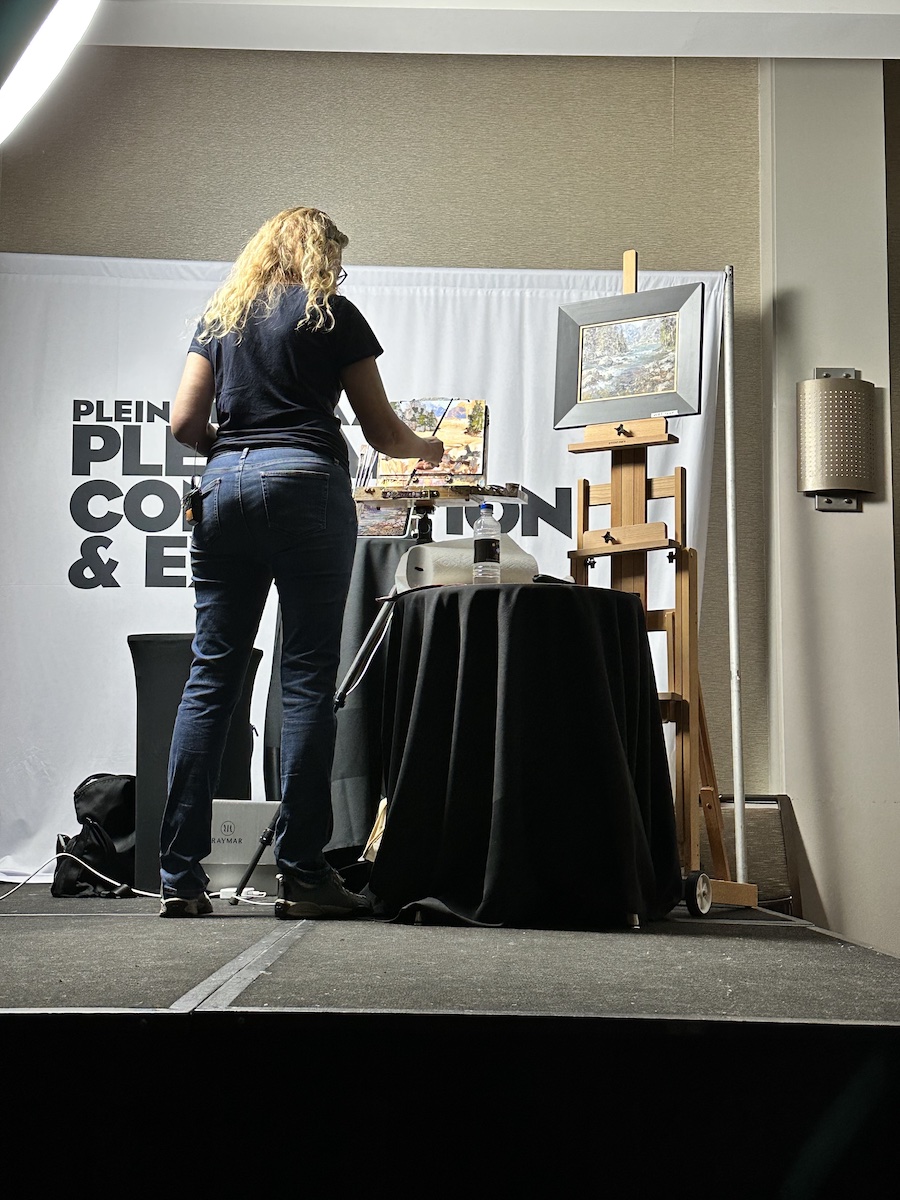
We joined acclaimed impressionist painter Kyle Buckland as he broke down his process, showing us the importance of design, value, and color and how to use them effectively to create dynamic and captivating paintings. “As artists and teachers, we have to teach people how to cultivate their intuition,” he said.
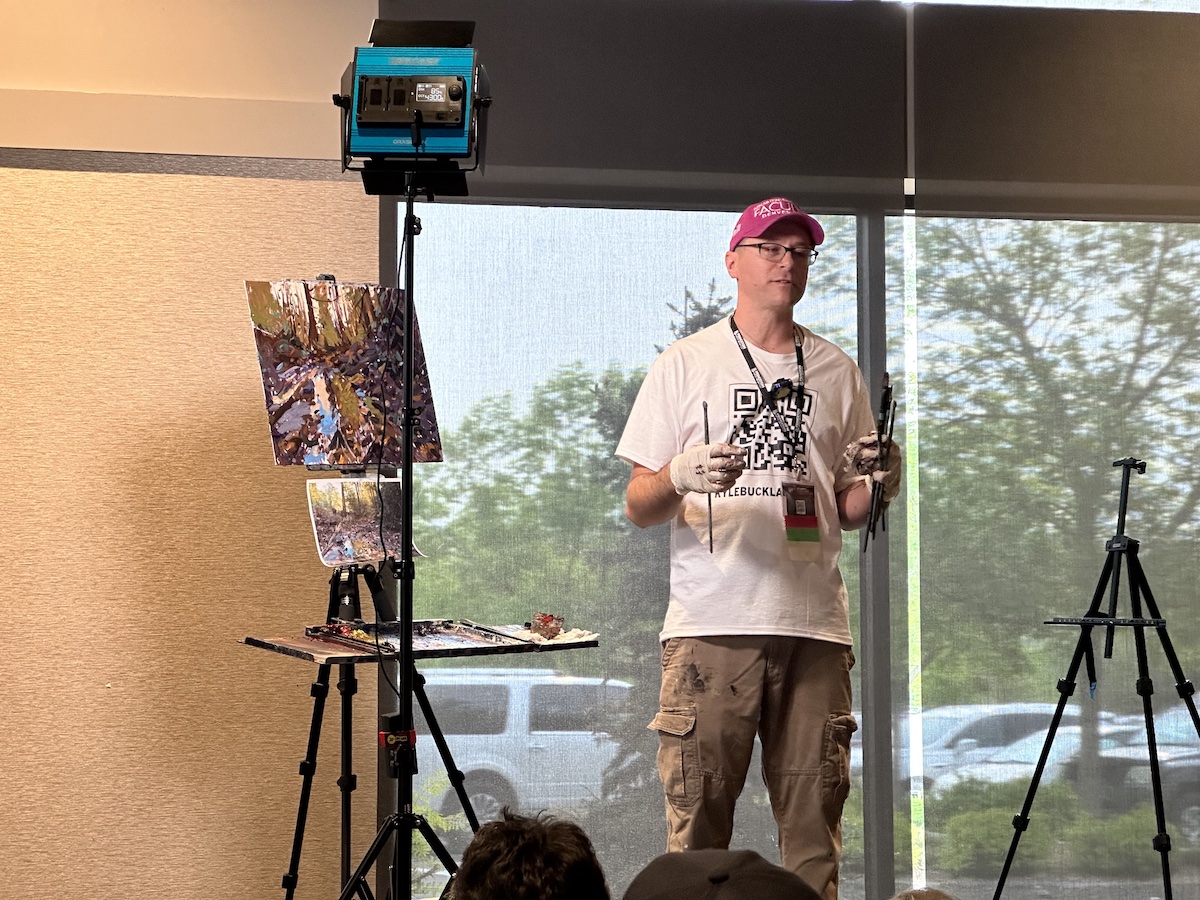
Colorado artist Bruce A. Gómez shared his unique process of watercolor preparation, underpainting, and palette to bring out the vastness and depth of the Colorado alpine landscape. And, Greg Watson gave a fascinating demonstration of PanPastels and the tools to use with them.
Figures can give scale and life to your landscape (rural or urban), but there are some common problems you may run into when adding them — a “stuck-on” feeling, a too-big head, or a figure that is out of proportion to the scene. Gail Sibley took us through a painting that included a figure, touching on all these considerations.
When you are standing in front of something like Hallet’s Peak, a gigantic rock in Rocky Mountain National Park, it’s hard to come to grips with the size and patterns. Colorado native Buffalo Kaplinski helped us tackle it in his unique and fascinating way.
Vladimir Yeliseyev demonstrated a painting using his essential American Journey Watercolors, and talked about why American Journey is his choice for paint.
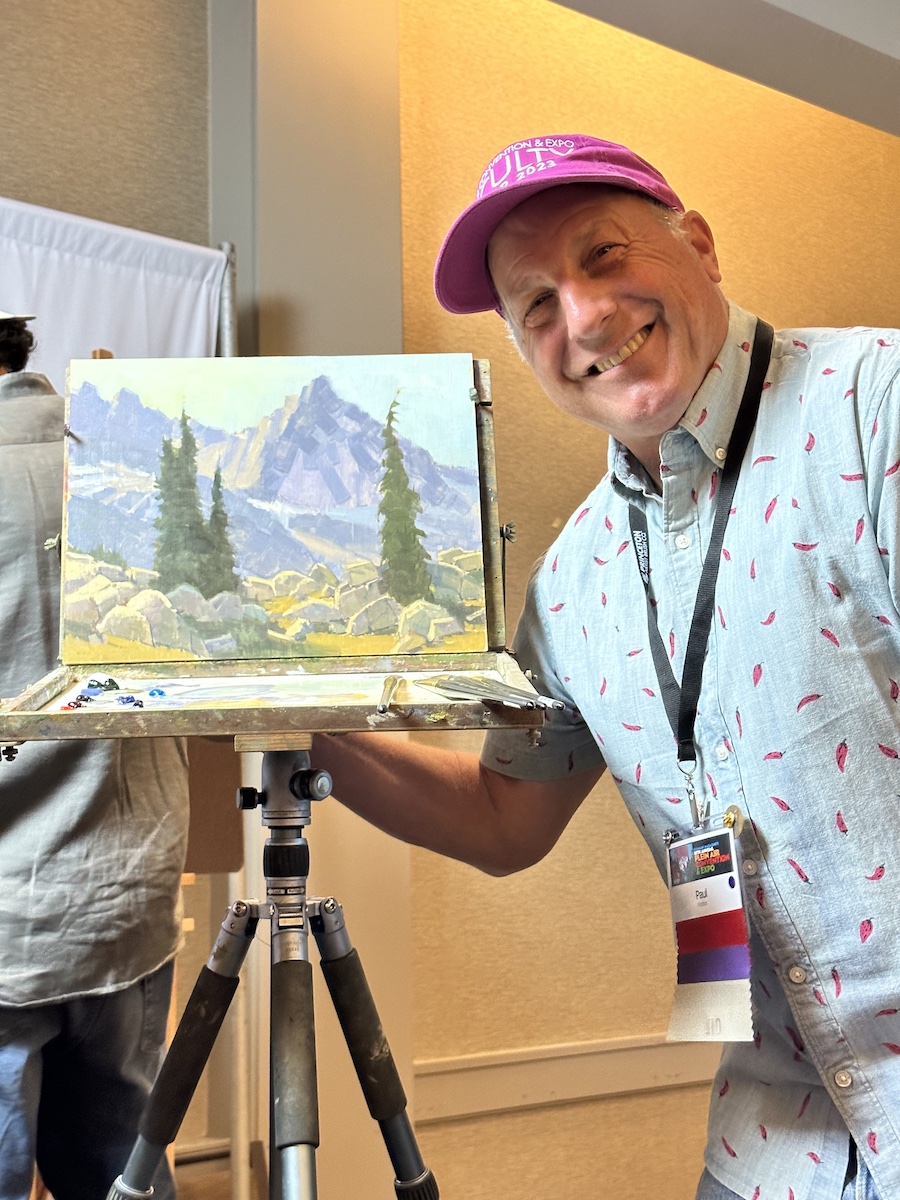
Each painting you do could go in a thousand directions. By being focused and committed in your work, your paintings become uniquely yours, and your painting process becomes faster, allowing you to “get the goods” before the sunlight shifts, tide comes in, or easel blows over. Charlie Easton gave us a framework for developing one’s own committed paintings and demonstrated two paintings from the same reference, telling two completely different stories. The demo will be in acrylics, but the principles apply to all media.
California artist Mark Fehlman shared his take on five concepts that take paintings to a new level: composition, shapes, color harmony, values, and the secret sauce!
Freshly back from France, Michele Byrne worked from a small plein air study to create a larger studio painting, adjusting it and adding a waiter or two to make the piece tell more of a story. She discussed her design, composition, value, and lighting ideas, and how to keep a studio piece looking fresh and impressionistic by adding the figures in a natural way.
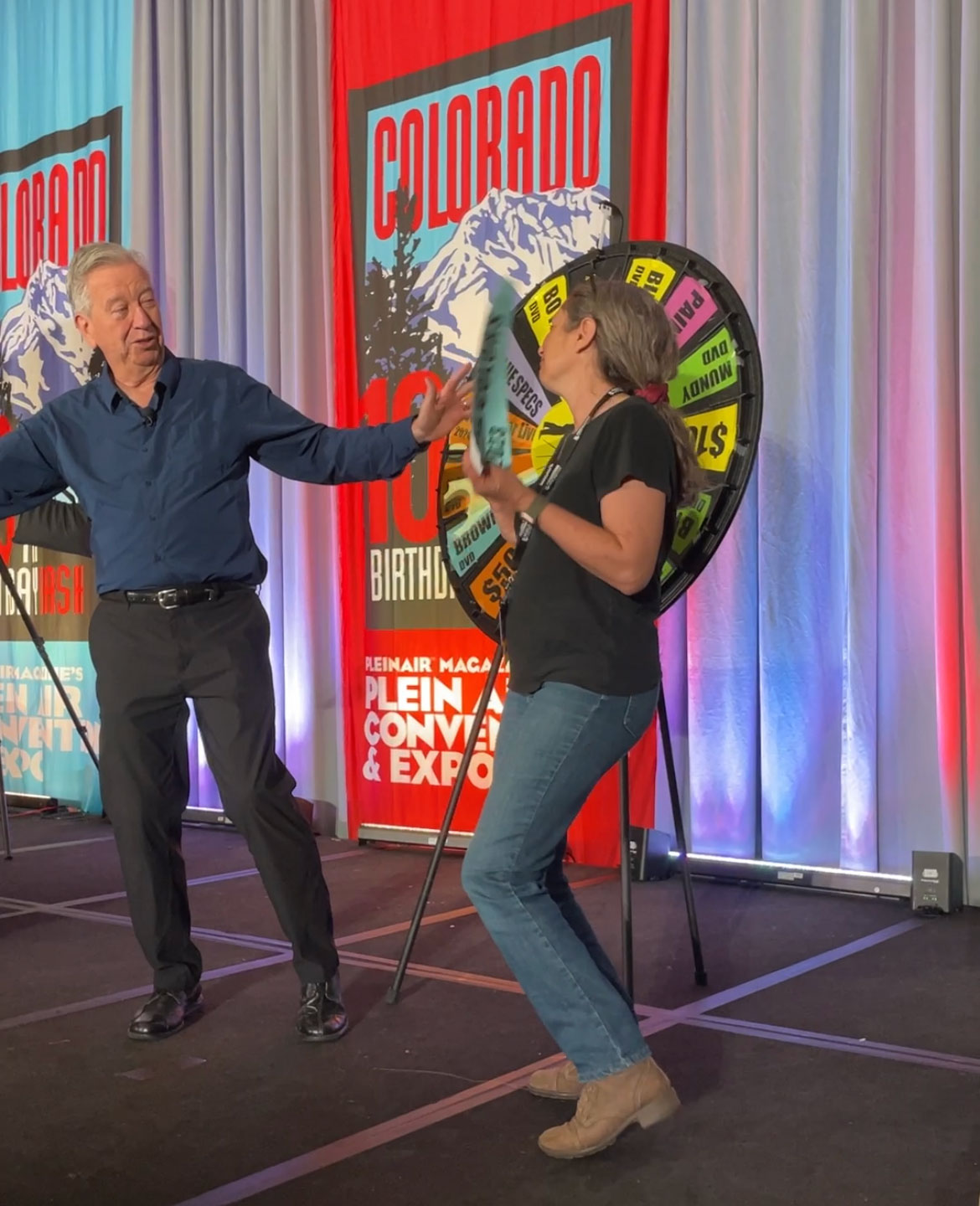
Animals can be challenging, especially when they have white fur because your eye sees only white, not all the nuances and shadows (real shadows — not the ones you refuse to commit to because your mind says, “It’s a white dog!”). How do you do this without wreaking havoc with white paint from the beginning of the painting? In Johanne Mangi’s demo she explained how to create the foundation that sets us up for a more successful outcome, all the while learning colorful mixes.
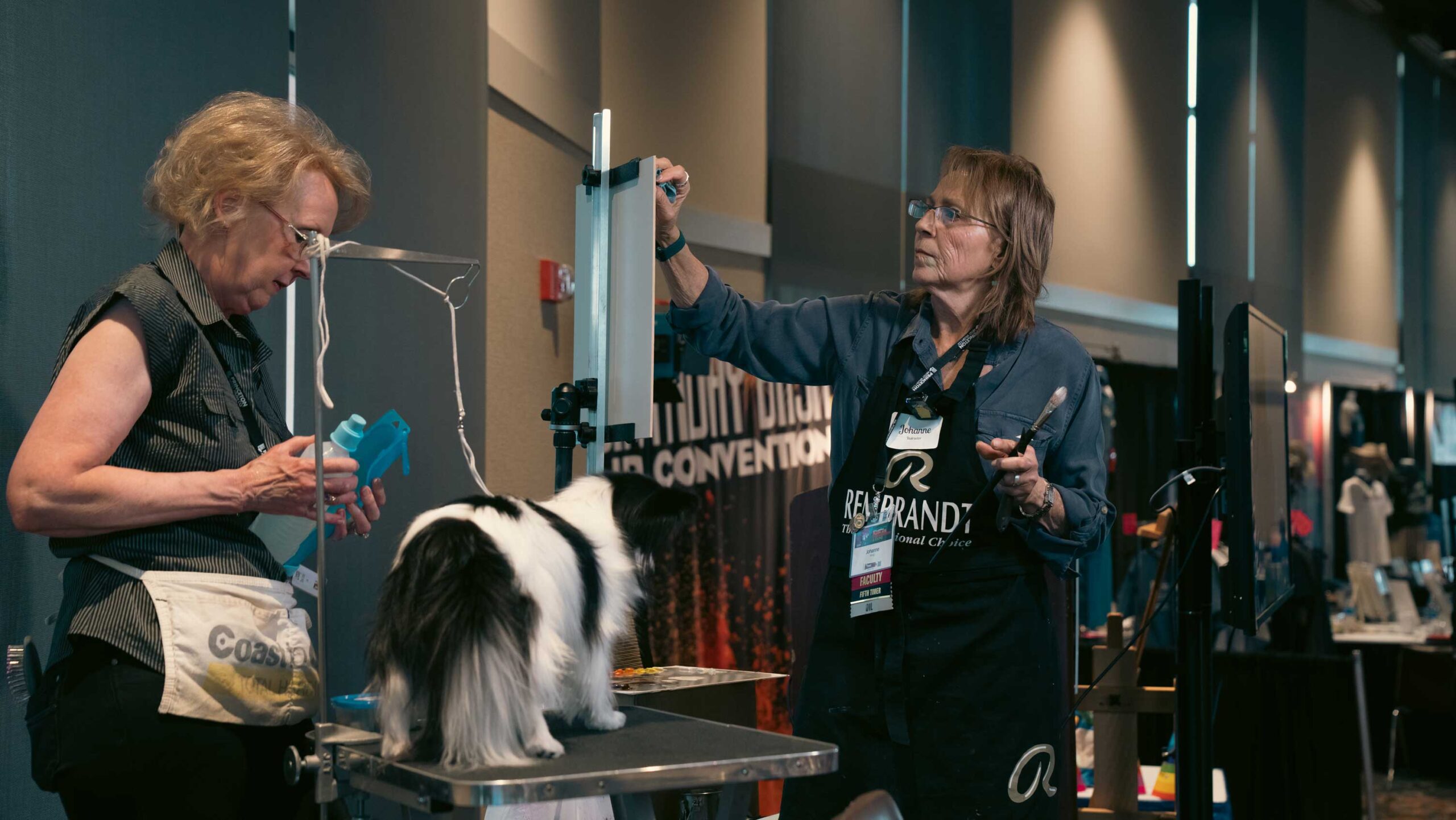
Continuing late into the evening, we enjoyed even more sessions:
Rich Gallego’s presentation showed us how to grab and hold viewers’ attention. We learned how to lead viewers’ eyes through the composition on a visual journey where you control the pace, what they should see, and when they should see it.
In this session, Ryan Jensen dove into the art of seeing, understanding, and painting captivating light as he painted a colorful sunset over water. Starting with principles of light, shadow, and atmosphere, Ryan demonstrated how to improve the light quality and pop in one’s work and make a sunset sit still for once!
Also closing the night, Mark Shasha and Suzie Baker led a critique session on the Watermedia Stage, giving feedback on paintings submitted by PACE attendees.
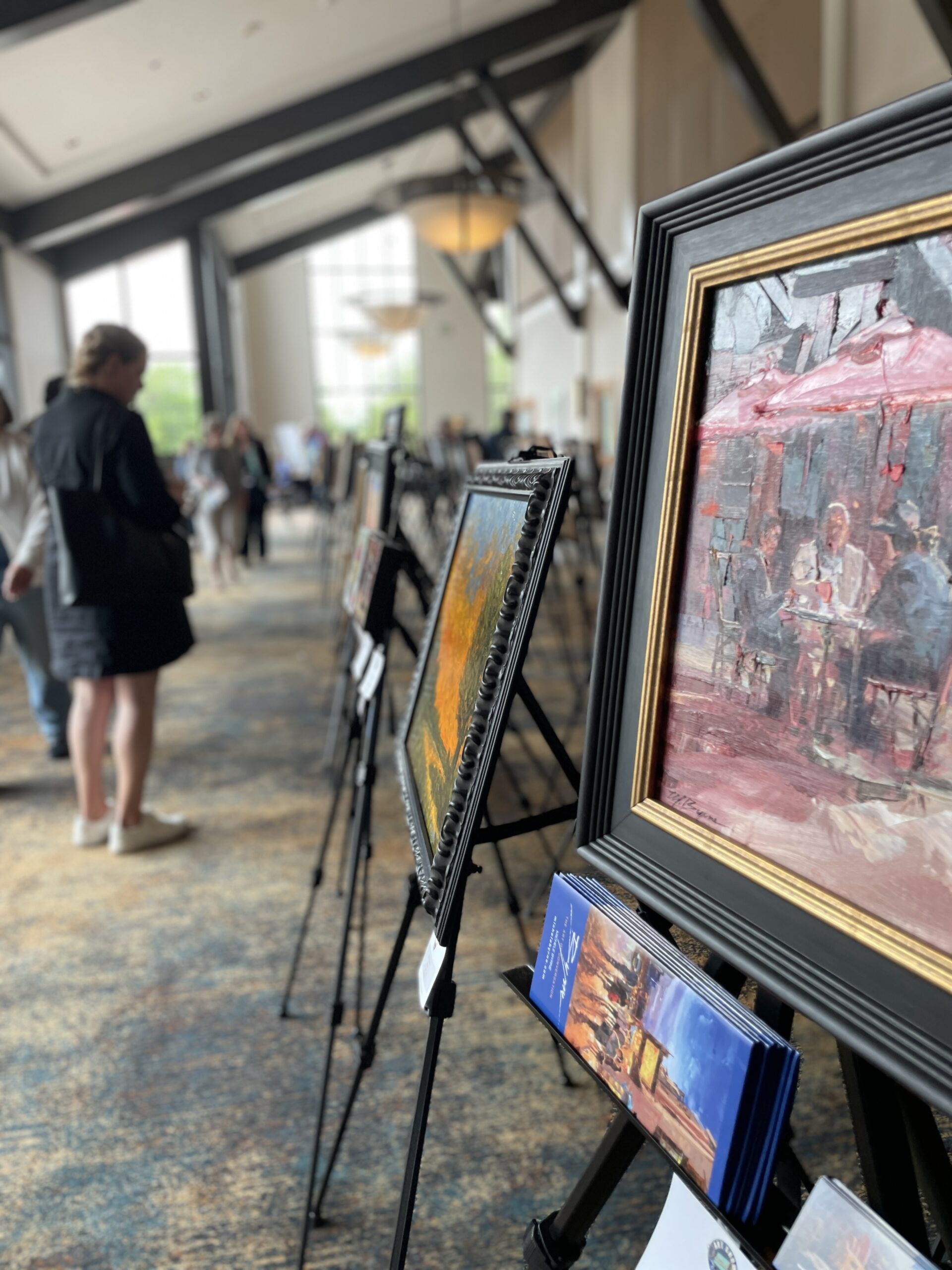
With so much to learn and experience, we’re only halfway through the 10th Annual Plein Air Convention! Don’t miss out on this incredible opportunity to join your fellow painters and be a part of the Plein Air Convention & Expo. Visit us at PleinAirConvention.com now to join online. – replays are available.
And, be on the lookout for the big announcement on where we’ll be next year!

